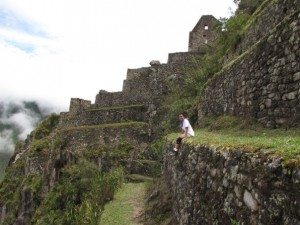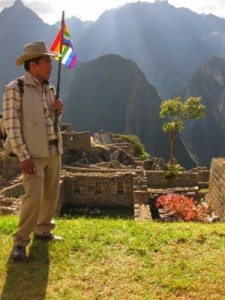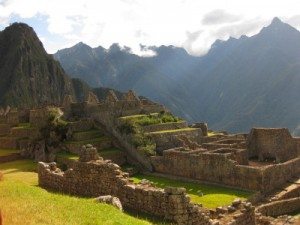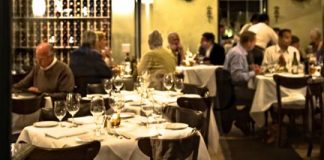




 By Alanna Brown, LuxEco Living Editorial Assistant
By Alanna Brown, LuxEco Living Editorial Assistant
A five-day, four-night trek on the Salkantay trail to Machu Picchu is more, in many ways, than you ever bargained for. First of all, looking at pretty mountains is so much easier than climbing them. Over the first two days you ascend more than 1,000 meters, reaching the tallest point of the climb…4,653 meters (over 15,000 feet) above sea level. As you ascend, the air gets thinner, therefore, your breath shorter. But every aching sinew, every throbbing muscle, every tendon and joint that cries out for you to stop, is worth while. Every wearied step is like a celebration. Waking up at 5:30 a.m. with no light to guide you besides that of a flashlight—without which, you wouldn’t be able to see your own hand in front of your face—is an adventure. Sledging through ankle-deep mud in the pouring rain, under the South American sky, becomes more than a nature trek. It becomes a true spiritual awakening.
 Salkantay, you learn, means “Powerful” in Quechua—the native Inca language. There could be no meaning more accurate. At the start of the trek, a rushing white river is at your left, descending thousands of feet to bubble past you. All around are reaching green mountains and on your right is another, climbing, stretching toward a clouded sky. Before you, between the distant pointed gullet of two touching foothills, you can see a towering wall, glowing white between dramatic steaks of gray-black. It is the face of the Salkantay glacier.
Salkantay, you learn, means “Powerful” in Quechua—the native Inca language. There could be no meaning more accurate. At the start of the trek, a rushing white river is at your left, descending thousands of feet to bubble past you. All around are reaching green mountains and on your right is another, climbing, stretching toward a clouded sky. Before you, between the distant pointed gullet of two touching foothills, you can see a towering wall, glowing white between dramatic steaks of gray-black. It is the face of the Salkantay glacier.
You share meals with your trek group in the middle of nowhere, usually served at a table and benches made from piled stones and slats of wood, beneath a straw-grass roof. There are eleven others; five loud, boisterous guys from Argentina, two guys and a girl from Belgium, a guy and a girl from Saint Louis, Missouri, a guy from Israel, and your Peruvian trek guide. During your meals, all kinds of languages are flying around like balls on a tennis court. You feel like a spectator at Wimbledon, watching these people switch from Flemish to English to French to Spanish faster than you can spell Hola.
 Over the course of the next four days, you will cross over countless landscapes. You descend down muddy slopes and rocks, in between boulders the size of houses, over rivers and across waterfalls, through swamp-like flatlands, into tropical forest, and then across rocky, desert-like terrain. The landscape is indescribably, unfailingly beautiful. The rushing rivers, the waterfalls bubbling over red and gray stones, the rickety wooden bridges that you slightly fear might collapse while crossing. There is endless green in thriving jungle and sprawling mountains. The variety of beauty contained within a ten-mile distance is beyond dreaming.
Over the course of the next four days, you will cross over countless landscapes. You descend down muddy slopes and rocks, in between boulders the size of houses, over rivers and across waterfalls, through swamp-like flatlands, into tropical forest, and then across rocky, desert-like terrain. The landscape is indescribably, unfailingly beautiful. The rushing rivers, the waterfalls bubbling over red and gray stones, the rickety wooden bridges that you slightly fear might collapse while crossing. There is endless green in thriving jungle and sprawling mountains. The variety of beauty contained within a ten-mile distance is beyond dreaming.
Eventually you come to the high jungle. Along the way you find avocado, passion fruit, and banana trees all growing wild. Tiny wild strawberries and coffee beans sprout up everywhere, along with the rainforests best gift—naturally healing plants and botanicals.
On the last day, the most anticipated day, you will at last enter the ruined city of the Incas. The final climb to Machu Picchu is over 2,500 uneven stone steps. The city is impossibly stunning. The name, in Quechua, means “Old Mountain.” And while the ruins do look old, with ancient crop terraces carved out of the mountain and crumbling stone temples, houses, walls, stairwells, all around you…they still appear brilliant. New in  the way that they make you marvel, command you to stand still and try—try—to take it all in. The vivid contrast of emerald grass and wild orchids in a centuries-old ashen world is like a collision of what you know and what you couldn’t have ever imagined. Surrounding mountains point high and disappear at their peaks into the white mist swirling above. These same mountains, their yellows and browns and reds all melt together and cascade down in innumerable patterns, until finally dripping into the river below and rushing east.
the way that they make you marvel, command you to stand still and try—try—to take it all in. The vivid contrast of emerald grass and wild orchids in a centuries-old ashen world is like a collision of what you know and what you couldn’t have ever imagined. Surrounding mountains point high and disappear at their peaks into the white mist swirling above. These same mountains, their yellows and browns and reds all melt together and cascade down in innumerable patterns, until finally dripping into the river below and rushing east.
You realize the magic of such a place can only reach someone who has ventured there. Whose feet have climbed the thousand stone steps and tread across the slender grass of scrupulously constructed crop terraces. Who, with face pointed up at the sky, has opened her mouth wide and tasted the lonely drizzle that falls on this sacred place. Whose ears have heard the trickling whisper of a 600-year-old irrigation system; met by the thunder of living waterfalls cutting a new path down the mountain. Whose imagination can recall the people of this indigenous civilization and draw them out of the dust, like ghosts bustling around you. And, not finally, because so much is left unsaid, who has witnessed the vastness, the fastidious care, the pride, the understated magnificence.
You glance down and see that someone’s calloused hands carried this very stone you stand on, this one stone of millions, and placed it here with exact purpose. So many men and women, strung out on coca leaves, were dragged up this cold and crumbling mountainside and into the temple to be killed. In this very place, in this city’s broken temple where a ceiling once blocked out the rain and the sun, were countless human sacrifices to their gods. You’re in the midst of an amazing culture. So different from anything you’ve ever seen. A different world. It’s hard to imagine life at home carrying on. People going to school and work. Traffic on the freeway. The freeway. Here, the sky is black at night and the stars are specks of lightning. Here, it smells of nothing but earth and water. Here, it is peaceful and silent and still.
You wish everyone you love could be here to see it with you because words and photographs cannot do it justice. So badly, you want to take a piece of it with you; more than what will be left in your memory…due to fade. If only you could bring it home and show everyone what the Incas built; the unfathomable world they created on that Old Mountain.













This is very interesting article